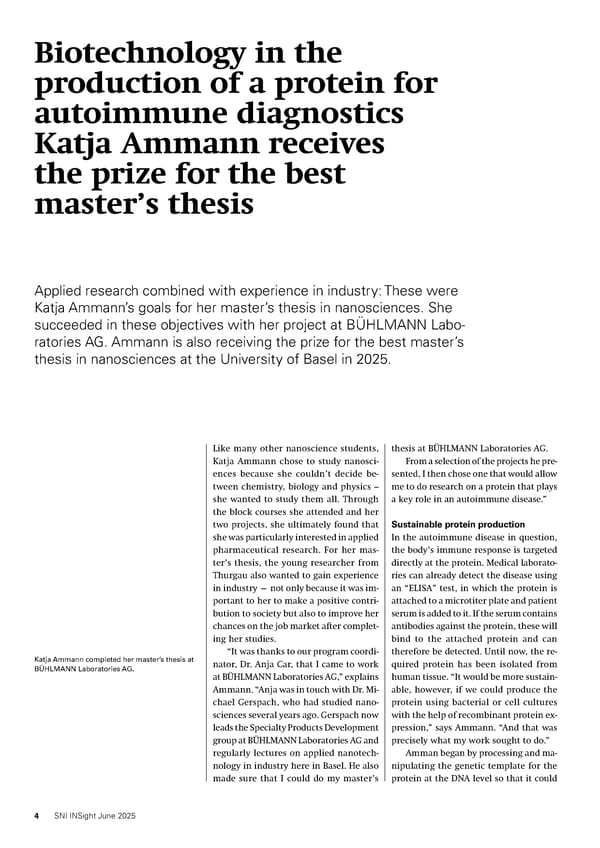Like many other nanoscience students, Katja Ammann chose to study nanosci- ences because she couldn’t decide be- tween chemistry, biology and physics – she wanted to study them all. Through the block courses she attended and her two projects, she ultimately found that she was particularly interested in applied pharmaceutical research. For her mas- ter’s thesis, the young researcher from Thurgau also wanted to gain experience in industry — not only because it was im- portant to her to make a positive contri- bution to society but also to improve her chances on the job market after complet- ing her studies. “It was thanks to our program coordi- nator, Dr. Anja Car, that I came to work at BÜHLMANN Laboratories AG,” explains Ammann. “Anja was in touch with Dr. Mi- chael Gerspach, who had studied nano- sciences several years ago. Gerspach now leads the Specialty Products Development group at BÜHLMANN Laboratories AG and regularly lectures on applied nanotech- nology in industry here in Basel. He also made sure that I could do my master’s Biotechnology in the production of a protein for autoimmune diagnostics Katja Ammann receives the prize for the best master’s thesis Applied research combined with experience in industry: These were Katja Ammann’s goals for her master’s thesis in nanosciences. She succeeded in these objectives with her project at BÜHLMANN Labo- ratories AG. Ammann is also receiving the prize for the best master’s thesis in nanosciences at the University of Basel in 2025. Katja Ammann completed her master’s thesis at BÜHLMANN Laboratories AG. thesis at BÜHLMANN Laboratories AG. From a selection of the projects he pre- sented, I then chose one that would allow me to do research on a protein that plays a key role in an autoimmune disease.” Sustainable protein production In the autoimmune disease in question, the body’s immune response is targeted directly at the protein. Medical laborato- ries can already detect the disease using an “ELISA” test, in which the protein is attached to a microtiter plate and patient serum is added to it. If the serum contains antibodies against the protein, these will bind to the attached protein and can therefore be detected. Until now, the re- quired protein has been isolated from human tissue. “It would be more sustain- able, however, if we could produce the protein using bacterial or cell cultures with the help of recombinant protein ex- pression,” says Ammann. “And that was precisely what my work sought to do.” Amman began by processing and ma- nipulating the genetic template for the protein at the DNA level so that it could 4 SNI INSight June 2025
 SNI Insight - 2025 June Page 3 Page 5
SNI Insight - 2025 June Page 3 Page 5